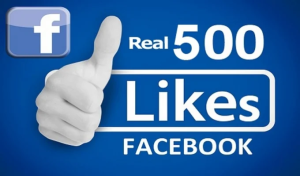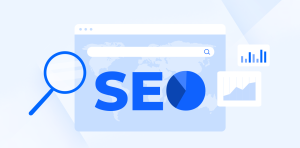Top Three Reasons Why Your Landing Pages Aren’t Generating Conversions

It’s frustrating, isn’t it?
You can see in your web analytics that bajillions of people are reaching your landing page, but none of them, nada, nil, zilch, have bought your product or sign up for your services.
* sigh *
At this point, you’ve learned the hard cold truth that getting traffic means nothing if you can’t convert your visitors into paying customers — or at least, leads.
In this guide, allow me to share with you several crucial reasons why your pages aren’t generating any conversions.
Let’s hop right in.
1. You’re Not Optimizing For Search
Let’s get one thing straight — your visitors won’t hesitate to abandon your landing page if they don’t find what they’re looking for.
“But why would they come to your landing page at all if they’ll leave just like that?”
Two words: User intent.
When searching for information online, users enter keyword-laden search phrases that should yield the results they want.
If you’re noticing a huge gap between your conversion rates and the amount of traffic pouring into your site, chances are your landing page is not optimized for keywords that indicate a strong purchase intent.
Whether you’re in the middle of a PPC campaign or shooting for organic SEO, you have to target keywords that are used by people who are more likely to take action.
To find keywords with high user intent, you can get the ball rolling with tools like Ubersuggest or Keywords Everywhere, which can provide you with a wealth of long-tail keyword ideas based on broad terms.
Targeting long-tail keywords is one of the best practices in SEO. In essence, long-tail keywords are longer (3 words or more) that are more specific and are being used by a narrower audience.
While long-tail keywords have less traffic, they are also less competitive, making them perfect for smaller brands who could really use faster results.
Let’s use Ubersuggest to look for long-tail keywords real quick.
Just head over to their homepage, enter a relevant seed keyword, and hit “Look up.” You’ll then be taken to a page with hundreds of long-tail keyword suggestions:
 As you can tell from the screenshot above, you can sort the results according to Search Volume, CPC (Cost per Click), or Competition.
As you can tell from the screenshot above, you can sort the results according to Search Volume, CPC (Cost per Click), or Competition.
The key to finding profitable long-tail keywords is to go for those with a competition rating of around 0.4 or less. Just be sure it has a workable amount of monthly searches to justify its use in your strategy.
To look specifically for keywords with high commercial intent, enter terms such as “Buy,” “Hire,” or “Services” in the Filters section.
In relation to the example above, the keyword “Hire” makes perfect sense for the seed keyword “Web Designer.”

And just like that, we got more refined results.

2. Your Website Takes Forever to Load
Before we begin this section, here are some truth bombs for you to chew on (courtesy of Kissmetrics):
- 40% of desktop users will abandon a site that takes 3 or more seconds to load.
- 47% of users expect a website to finish loading in 2 seconds.
There are many other statistics that are worth mentioning, but the point here is already clear and unequivocal:
A slow-loading website can single-handedly kill your conversion rate.
Thankfully, there are many solutions that can help you speed up your website.
Using a Performance Analysis Tool
Running a complete analysis of your website is a great springboard for your performance optimization efforts. And for that, we can’t recommend Google PageSpeed Insights enough.
Using Google PageSpeed Insights is easy. Simply enter the URL of your site, click “Analyze,” and wait for the findings.
 On top of getting optimization and page speed scores, you also get actionable recommendations that will help give your WordPress site the boost it sorely needs.
On top of getting optimization and page speed scores, you also get actionable recommendations that will help give your WordPress site the boost it sorely needs.

Leveraging a Content Delivery Network (CDN)
You can significantly increase the loading speed of your WordPress site with the help of a CDN (content delivery network). It’s invaluable if your website caters to the international audience, and we’re about to explain why.
Simply put, a CDN is a network of proxy servers located in different locations. By storing cached versions of your website’s content, these servers are tasked to send content to nearby users.
In other words, a CDN speeds up the delivery of your data by eliminating latency due to distance.

3. Your Landing Pages Aren’t User-Oriented
For a landing page that converts, every single element must further the target audience’s goals.
This means being in touch with their pain points, figuring out how to help them, and then identifying the elements they need in order to take action.
While every landing page has a different objective, most share the same elements when it comes to conversions.
Here are some of the must-have elements that deserve your consideration:
- The Offer
First of all, your landing page must answer one question: what’s in it for users? What are the benefits he or she will get when they click your CTA button? - The Headline
When it comes to grabbing the user’s attention, your headline must take the center stage. It must be designed to fully engage your visitors and persuade them to, at least, have a look at what you’re offering. - The Hero Shot
In addition to the headline, a benefit-centric image should give users that much-needed push towards conversions. It’s a classic case of “show, don’t tell.” - The Social Proof
To win your audience’s trust, social proof can be used to show that other people have seen success with your brand. This can be in the form of customer testimonials, reviews, or star ratings.
 (Image Source: StoppingScams.com)
(Image Source: StoppingScams.com)
For better results, you need to check if these elements translate well on mobile as well. You can use a cross-platform testing tool like Screenfly for a quick look at how your site performs in different screen types.
Final Words
Being mindful of the mistakes listed above can mean the difference between a landing page that converts and one that gathers virtual dust.
So, review your landing pages and make sure you’re not guilty of any of these mistakes yourself. It’s tedious, but it’s definitely better than wasting the true conversion potential of your website.
Are there any other landing page optimization strategies we may have missed? If so, feel free to share them below!
Author: Ravi Bhatt is a crazy blogger & founder of MeetRV , where he accept and publish news-information about various concepts. He aims to help bloggers and readers with his latest tips.






